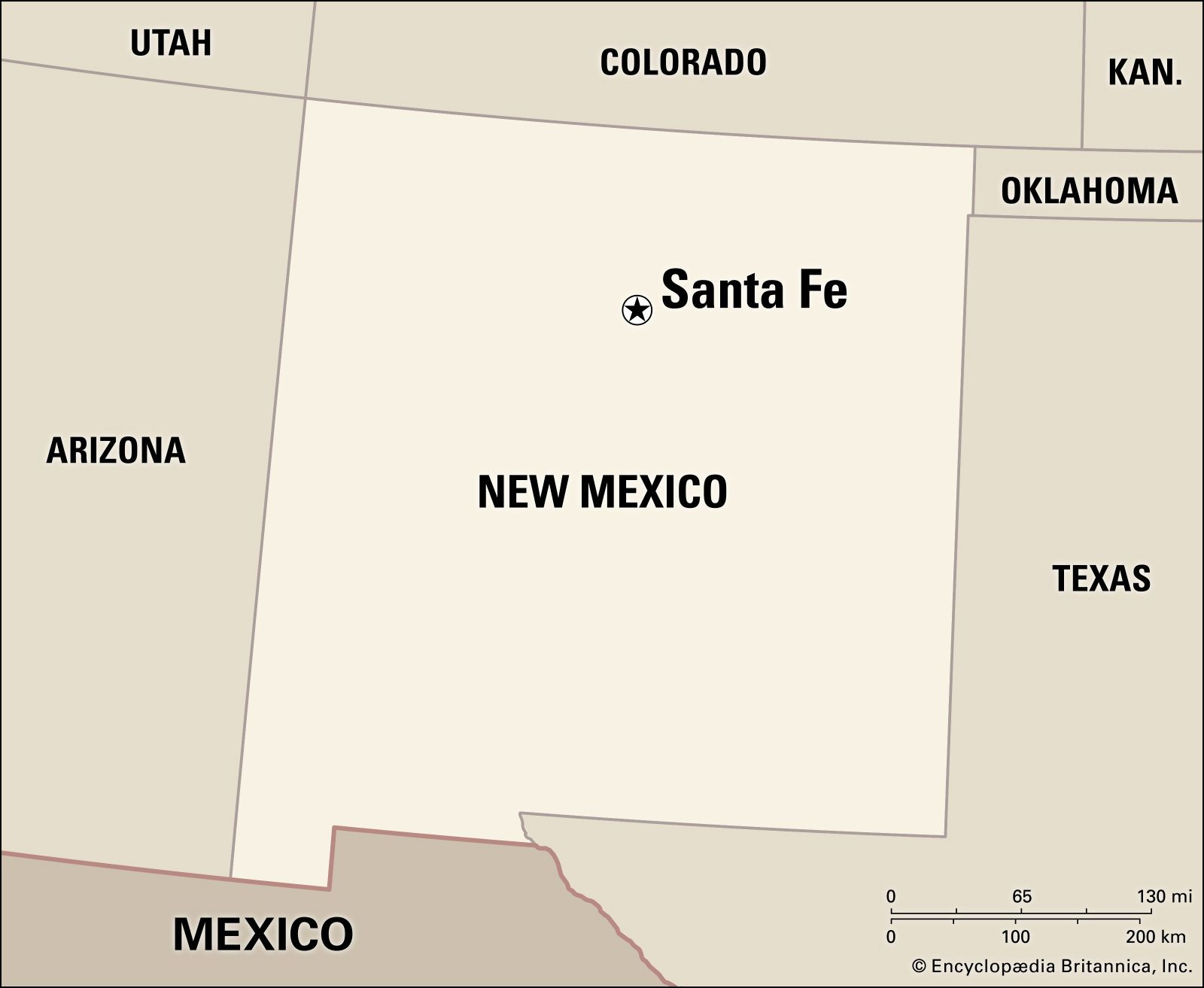Santa Fe, nestled in the north-central part of New Mexico, proudly holds the distinction of being the state’s capital. Beyond its political significance, Santa Fe is a city steeped in history and culture, inviting exploration and discovery. Situated at the foot of the majestic Sangre de Cristo Mountains and within the northern Rio Grande valley, its elevation of 6,996 feet (2,132 meters) above sea level contributes to a uniquely invigorating and dry climate, making it a sought-after destination year-round. This climate, while drawing summer vacationers, also makes Santa Fe a haven for winter sports enthusiasts, particularly those keen on mountain skiing.
Santa Fe’s story begins in 1610 when it was established by Governor Don Pedro de Peralta. Originally christened Villa Real de la Santa Fé de San Francisco de Asis, meaning “Royal City of the Holy Faith of St. Francis of Assisi,” the city was meticulously planned around a central plaza, a common feature in Spanish colonial towns. This early development was disrupted in 1680 by the Pueblo Rebellion, leading to the city’s evacuation. However, Spanish resilience saw Don Diego de Vargas peacefully retake Santa Fe in 1692, an event still celebrated annually with a vibrant fiesta, commemorating the city’s enduring spirit and rich heritage.
Throughout the 18th century, Santa Fe flourished as the nerve center of a vast, yet sparsely populated Spanish colonial frontier province. It served as the administrative, military, and missionary hub, projecting Spanish influence across a wide territory. The narrative of Santa Fe took another turn when U.S. interest piqued, largely due to the reports from Lieutenant Zebulon M. Pike, who found himself imprisoned there during his explorations of the Southwest in 1806. Following Mexican independence in 1821, Santa Fe experienced a surge in commercial activity thanks to the burgeoning wagon-train commerce along the historic Santa Fe Trail.
The Mexican-American War marked a significant chapter as U.S. forces, led by General Stephen Watts Kearny, occupied Santa Fe in 1846. The city witnessed the dawn of English-language journalism with the publication of a newspaper in 1847. When New Mexico was ceded to the United States in 1848, Santa Fe’s importance was solidified, becoming the capital of the Territory of New Mexico in 1851, and subsequently, the state capital upon New Mexico’s statehood in 1912. Even the turmoil of the American Civil War touched Santa Fe, albeit briefly, with a two-week occupation by Confederate forces in 1862. The arrival of the railroad in 1880 and fleeting mining booms in the nearby mountains contributed to its growth, but Santa Fe primarily remained a vital trading post for ranchers, farmers, and the region’s Native American communities.
 Aerial view of Santa Fe, New Mexico, showcasing the city's landscape and Spanish colonial architecture
Aerial view of Santa Fe, New Mexico, showcasing the city's landscape and Spanish colonial architecture
A pivotal moment for Santa Fe’s modern economy arrived with the construction of the Los Alamos Scientific Laboratory (now Los Alamos National Laboratory) in the early 1940s. Located just 35 miles (56 km) northwest of Santa Fe, this atomic research facility injected new economic vitality into the region, transforming Santa Fe and its surroundings.
Santa Fe’s commitment to preserving its rich past is evident in landmarks like the Palace of the Governors, initially built in 1610 by Peralta and restored as a museum in 1914. This historic structure stands in contrast yet complements the newer state government buildings, including the capitol completed in 1966. The city’s architectural identity is fiercely protected by zoning ordinances since 1958, championing the traditional Spanish-Pueblo Indian architectural style. Religious landmarks such as the 17th-century Chapel of San Miguel (Oldest Church), and the Cathedral of St. Francis, built in 1869, are not just places of worship but also significant architectural and historical sites. The legacy of Bishop John B. Lamy, who built the Cathedral, was immortalized in Willa Cather’s renowned novel Death Comes for the Archbishop, set in the Santa Fe region.
As a cultural capital, Santa Fe boasts a significant Spanish-American population and a rapidly growing commercial and residential sector. Its location on the site of a prehistoric Tiwa pueblo underscores a long history of habitation, with ongoing archaeological research in the surrounding areas. The Museum of New Mexico system is a cornerstone of the city’s cultural landscape, encompassing the Palace of the Governors, the Museum of International Folk Art, the Museum of Fine Arts, and the Museum of Indian Arts and Culture. These institutions celebrate the diverse artistic and cultural heritage of the Southwest and beyond. Santa Fe has also been a nurturing ground for artistic talent, notably supporting Maria Martinez and her husband Julian, whose Pueblo pottery gained international acclaim. Educational institutions like the College of Santa Fe (founded in 1859), St. John’s College (1964), the Santa Fe Indian School (1932), and the New Mexico School for the Deaf (1887) further enrich the city’s intellectual and cultural environment.
Santa Fe’s vibrant history includes the remarkable contributions of figures like Nina Otero-Warren. In 2022, she was honored as part of the American Women Quarters Program for her pioneering roles as a leader in New Mexico’s women’s suffrage movement, the first Hispanic woman to run for U.S. Congress, and the first female superintendent of public schools in Santa Fe.
Today, Santa Fe continues to be a vital regional hub, serving as a headquarters for the National Park Service and the Santa Fe National Forest. Its five state monuments, overseen by the Museum of New Mexico, further attest to its historical and cultural significance. From its humble beginnings as a Spanish colonial outpost to its current status as a thriving capital city, Santa Fe encapsulates a rich tapestry of history, culture, and natural beauty, making it a truly unique American capital.